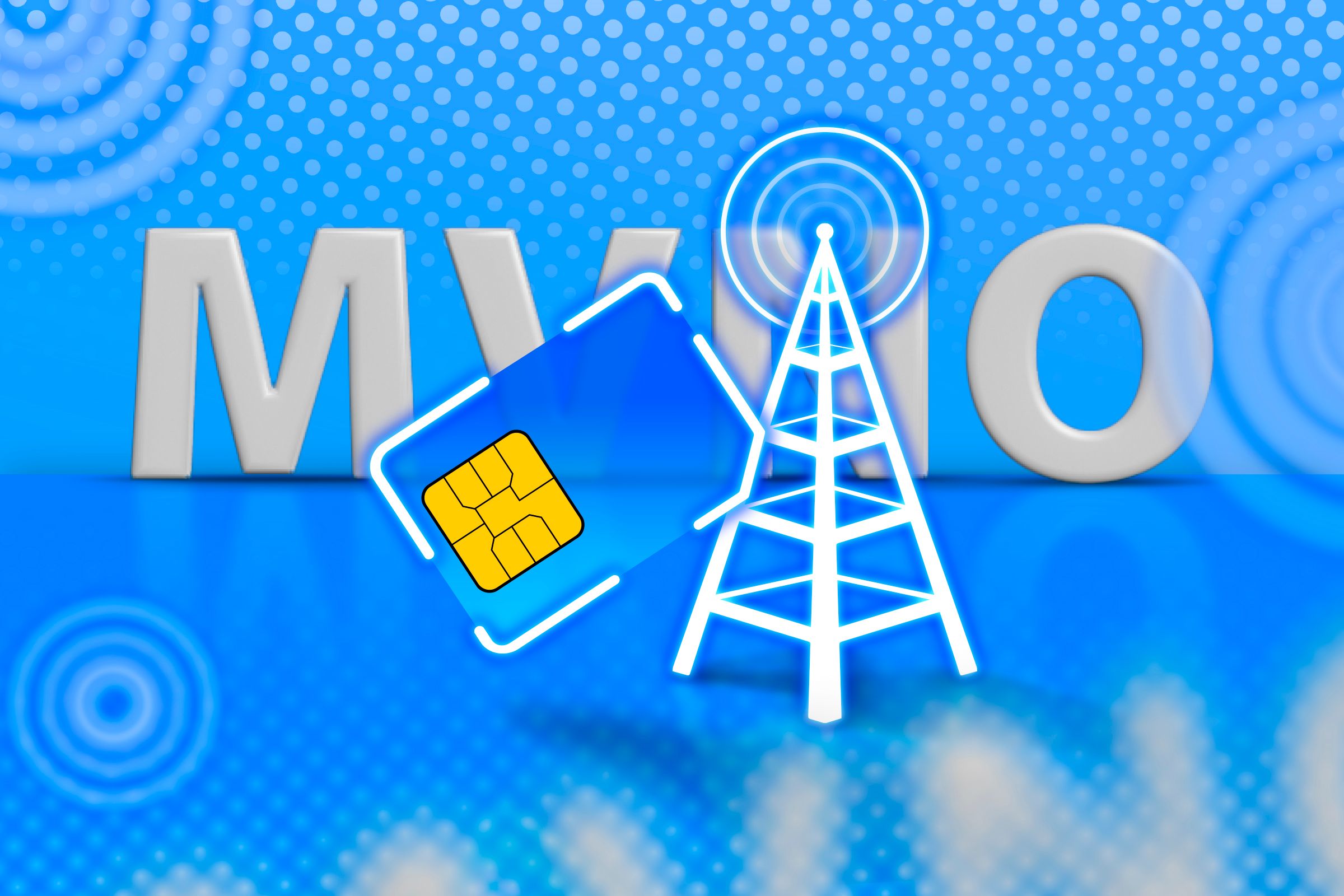Quick Links
-
“No Frills”, Prepaid Plans
Though you may not have heard the term “MVNO” before, you’re likely familiar with many of these companies. Carriers like Mint Mobile, Straight Talk Wireless, and Google Fi offer customers fast, reliable cellphone service at much lower prices than their major competitors, but how is this possible?
What Is an MVNO?
An MVNO, or mobile virtual network operator, is a telecommunications company that rents network space from one or more major carriers. The three big networks in the US are T-Mobile, Verizon, and AT&T. Along with the privately owned MVNOs they support, each carrier also hosts its own MVNO. T-Mobile owns Metro by T-Mobile (formerly Metro PCS), Verizon owns Visible by Verizon, and AT&T owns Cricket Wireless.
One special case, however, is Boost Mobile. Most people know this company from its humble beginnings as an MVNO, but things are slowly starting to change. While Boost still rents from T-Mobile and AT&T, it also runs on its own network infrastructure.
No Infrastructure Costs
Speaking of infrastructure, cutting these costs is the most obvious way MVNOs save their customers money each month. By renting network space from larger companies, MVNOs don’t have to worry about initial equipment costs, installation costs, preventative maintenance, or repairs. The majority of MVNOs take this a step further and have also done away with physical stores to cut back on operational costs as well.
MVNOs and their customers aren’t the only ones benefiting from this arrangement, though. In return, host companies can offset some of their business expenses with the money generated from the companies they rent to. In theory, this is similar to the arrangement between a landlord and the tenants of their apartment building.
Data Differences
MVNOs also provide lower costs to their customers by accepting lower data bandwidth and secondary data priority during peak times in comparison to the host companies.
During low-traffic hours, MVNO customers will have nearly indistinguishable data speeds and a similar overall experience to customers of the host network. During high-traffic times, on the other hand, customers of the host network will be prioritized, resulting in slightly slower experiences for MVNO customers.
In the past, MVNOs got a bad reputation for being slow and unreliable due to this data agreement. Now that technology has substantially improved and bigger names like Google are getting on board, customers are hardly affected by this arrangement. Offering nearly identical data services at a much lower cost also allows MVNOs to compete more directly with the primary networks.
“No Frills”, Prepaid Plans
The final major, money-saving difference between MVNOs and their host companies lies in the service plans provided. With carriers like T-Mobile and Verizon, customers pay for the services they’ve used at the end of every month, while MVNO customers choose a plan that fits their expected needs and prepay at the beginning of each month.
Because major carriers are primarily postpaid, they typically require potential customers to undergo a credit check, and plans are subject to price changes at any point. In contrast, prepaid plans are locked into a specific price, meaning no unexpected charges and no credit checks.
MVNO plans also tend to be more flexible because of this prepaid structure. Major carriers typically only offer one-size-fits-all plans based on what features customers most frequently ask for, and it may be difficult to switch plans even without being on a contract.
Conversely, MVNOs offer a variety of plans and the ability to mix and match features and customize family plans. Some allow customers to effortlessly switch plans or temporarily pause service through the carrier app.
Additionally, prepaid plans typically don’t include perks like streaming service subscriptions, cloud storage, or hardware deals and upgrades that entice you into a higher-cost plan. If you’re already paying for the offered services individually and want premier phone service, then bundling through your phone company may be the perfect solution. Otherwise, these extra frills can quickly become money wasters.
Without infrastructure costs or extra perks, and by accepting lower priority data during peak times, MVNOs can provide low-cost, flexible plans for their customers. If you’re looking for the same great service that T-Mobile, Verizon, and AT&T offer at a much lower price, check out which MVNO’s are on your preferred network.
Source link
